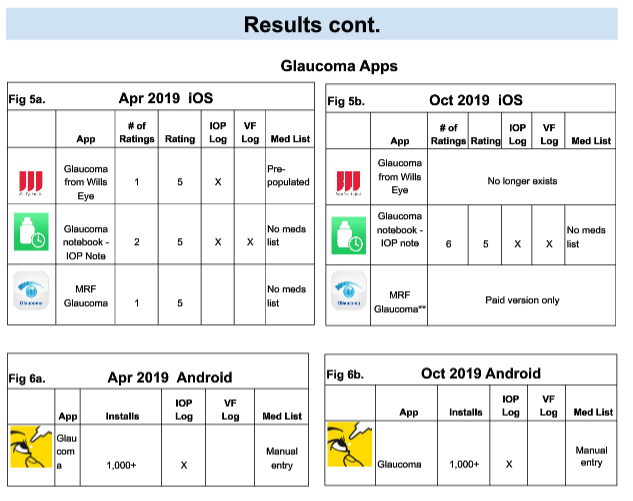Mobile glaucoma apps may play limited role in awareness, education

Mobile glaucoma apps results

Abbreviations for medication adherence apps in iOS and Android

Mobile apps designed to improve and facilitate adherence of patients with glaucoma to their treatment regimens are a step in the right direction but not all may achieve their goal, according to one researcher.
This article was reviewed by Brian Leung, BS
Mobile apps designed to improve and facilitate adherence of patients with glaucoma to their treatment regimens are a step in the right direction but not all may achieve their goal, according to one researcher.
Despite the large number of apps available to help patients, the results of a study of the efficacy of glaucoma mobile apps found a great need for eye-care providers to continue their education efforts with patients regarding the importance of adherence to medication regimens and how glaucoma deteriorates vision.
Clearly, the importance of treatment adherence has long been recognized by the community of glaucoma specialists, judging by the number of mobile apps that have popped up. Of the 325,000 mobile health apps that are available to patients, about 5,800 are dedicated to adherence to medication regimens. This large number prompted Brian Leung, BS, a research assistant from Tufts University in Medford, MA, and colleagues to explore if these free, readily available apps are actually achieving their goal of helping patients with glaucoma.
To do this, the investigators searched the Apple App Store (iOS) and Google Play (Android) to access available medication adherence apps using the search terms medication reminder and medication log and to access glaucoma apps using the search term glaucoma. Both types of apps were evaluated based on the numbers of downloads of the Droid operating system and by the star ratings for the iOS operating system.
The investigators included in their analysis the 10 most popular apps from each operating system. The apps were included if they could be obtained by patients at no cost; apps were excluded if there were no available data on ratings or the number of installations. The medication adherence app analysis included the presence of a pre-populated list of glaucoma medications, that included the brand and generic names of drugs, and the glaucoma apps were analyzed for the inclusion of logs for recording IOP, visual fields, and medications, Leung recounted.
Of the apps identified using the term medical adherence, only four of the 10 most popular Droid apps included pre-populated lists of glaucoma medications; the other five required manual input of the medications. Five of the 10 most popular iOS apps had prepopulated lists of glaucoma meds and the others required manual entry. Only one app included a complete list of glaucoma medications, that is, both the generic and brand drug names.
Regarding the glaucoma apps, only one Droid app was available and featured an IOP log. Of three iOS apps, two of three had an IOP log; one of three had a VF log; and one of three had a glaucoma medication list; none of the three had a VA log, the investigators reported.
“Medication adherence and glaucoma apps are not tailored to meet the needs of glaucoma patients," Leung concluded. "As clinicians, we need to continue our education efforts about adherence and glaucoma.”
Disclosures:
Brian Leung, BS
Leung has no financial interest in any aspect of this report. He was joined in this study by Gloria Wu, MD, from the University of California, San Francisco, School of Medicine; Kevin Lu, BS, from University of California, San Diego; Shannon Luu, BS, from Santa Clara University, Santa Clara, CA; and David Lee, MD, MS, MBA, from the University of Texas, McGovern Medical School, Houston.